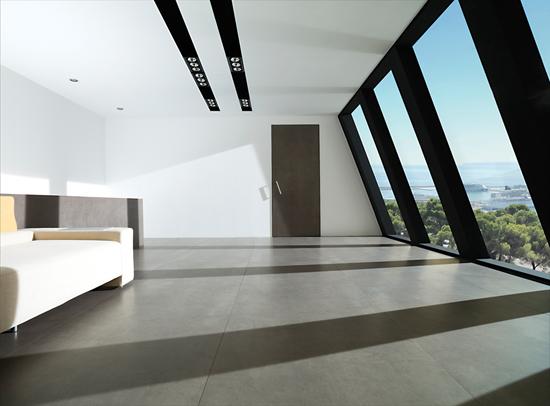Tile Files - Aug/Sep 2013
By Ryan Fasan
I define trend-spotting as the art of immersing oneself in the vast stream of information that surrounds us—to absorb the currents of fashion, technology, media and design—and then to find the common threads throughout. With so many indicators to track, especially in today’s information-overload culture, it’s even more important to understand and hone in on the macro trends and colors that will define tile for the coming year. I hope these insights into tile trends and technology will inspire and inform your business.
Technology
Thin tile technology for flooring has come a long way and is now gaining traction in the U.S. marketplace. The benefits for flooring are noteworthy insofar as large formats require little grouting and offer easy installation, and thin tiles can be installed over existing flooring for remodeling. With the low water absorption and high mechanical performance of porcelain, it is a great solution for exterior and wet areas as well. Manufacturers offer this high tech tile in varying thicknesses, depending on their own proprietary formulations for performance. Look to thin tile to be the wave of the future. (See photo above.)
Textures in Tile
No longer are tiles just flat on the wall or floor. They have depth and movement to them. A couple of years ago, architects drove tile manufacturers to innovate to add dimension to tile. Now this has become a mainstream trend that extends beyond tile that bends and folds in unique shapes. Texture in flooring increases the realism and energy of stone and wood looks.
Vintage and Well-Loved Looks
What’s old is new again. What’s exciting about the new vintage looks is the extent to which the designs are re-imagined for today’s modern lifestyles. Wood tile doesn’t have to necessarily look like a new wood floor plank; it can be pushed to look like distressed or reclaimed wood. Vintage patterns don’t have to retain their classic colors; they can be presented in trending color palettes. And they can look old or new, be installed as an accent or mixed and matched into completely new patterns. The options and design flexibility are infinite.
Bringing the Outdoors In
Another trend worth noting is the ability of tile flooring to transition between indoor and outdoor spaces in a way that no other flooring has the capability to do. We are seeing so many more ambiance photos from our Tile of Spain manufacturers that demonstrate this capability and design trend. Home spaces are getting smaller, and there is a real need to expand the visual point of reference by tying the exterior to the interior. It makes the room look that much bigger and brings nature into our “indoor” world. Of course, Frank Lloyd Wright was doing this 100 years ago, but today’s advances in architectural glass and wall systems allow everyday homeowners to be protected from the elements and yet experience them at the same time.
Color
Advanced inkjet technology and glazes are delivering new interpretations of color, including deep blacks and pure whites, chilled-out cool tones, contrasting red and metallics.
The palette of today is deep, saturated and dynamic. Manufacturers are providing richly nuanced tones in complementary colors, allowing each client to create their own unique style.
Stone and Natural Looks
Stone and natural looks are really trending in tile. The advantages for flooring beyond price and accessibility are impressive. For wet and high traffic areas, tile offers long-term durability and anti-slip features that stone cannot match. From opulent to sophisticated, and from matte finish to highly polished, these high tech stone look-alikes are stunning, high performance tile flooring options.
|
THECNOLOGY NOTE ON HIGH POLISHED TILE SURFACES |
|
SThe new high polished surface looks from spain are perfect for residential use in entryways, baths and other living areas. Many designers and retailers ask me how these looks are achieved, so here's a brief explanation. |
Copyright 2013 Floor Focus
